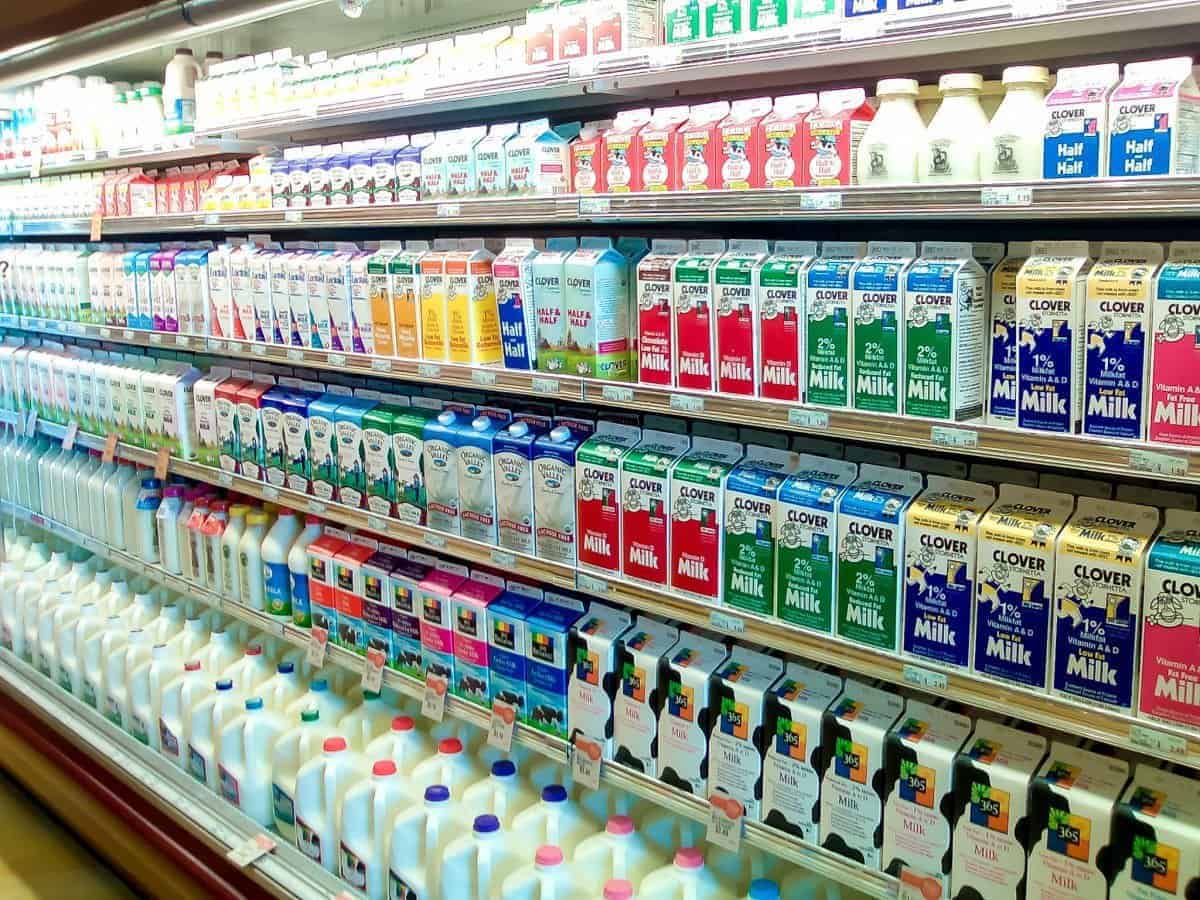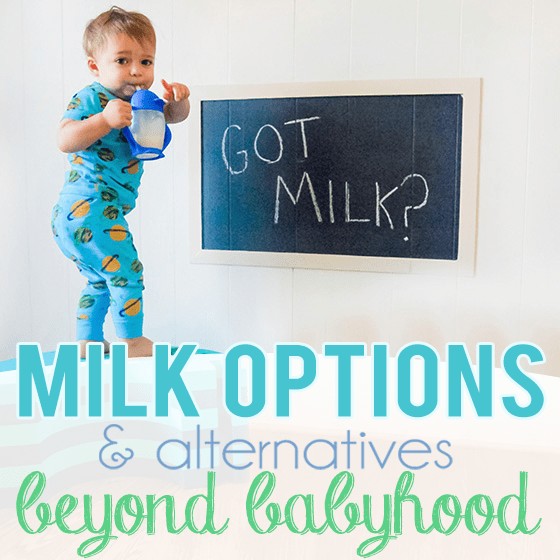A huge part of transitioning your child from an infant to a toddler diet is changing their source of milk. In our society many people are surprised to find out that a healthy child doesn’t actually need milk (gasp!). There are many children, and adults alike whose bodies are actually unable to process the lactose in milk as well as many who have chosen a dietary lifestyle that milk doesn’t fit into. When it comes time to transition your child from breast milk or formula there is actually a plethora of options, all with pros and cons. Read on to educate yourself about milk and all of the milk alternatives to help decide what route best suits the needs of your family.
Milk, or alternative milk of any kind, should never be a substitute for water, which is nature’s perfect beverage. Make sure you encourage your children to develop the habit of drinking water as their primary source of hydration. Also, it is important to recognize that milk of any kind, including breast milk, is not a complete source of nutrition for your child after the age of one. So it is crucial to make sure they are eating a well-balanced diet full of vitamins and minerals to ensure that these needs are met.
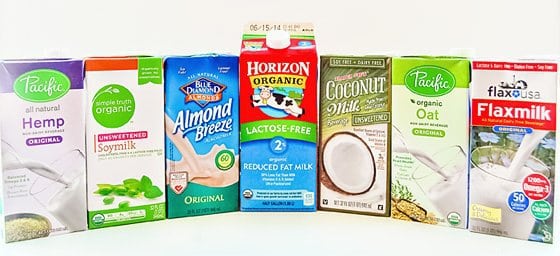
If you are questioning what milk (or milk alternative) you should be transitioning your child to, it is also critical to know that in today’s average food lifestyle the vitamins and minerals obtained from milk can be more than adequately obtained through a healthy diet alone. Therefore, this post isn’t meant to advocate for or against milk but instead to educate you on all the options that are out there and the benefits and/or drawbacks of each.
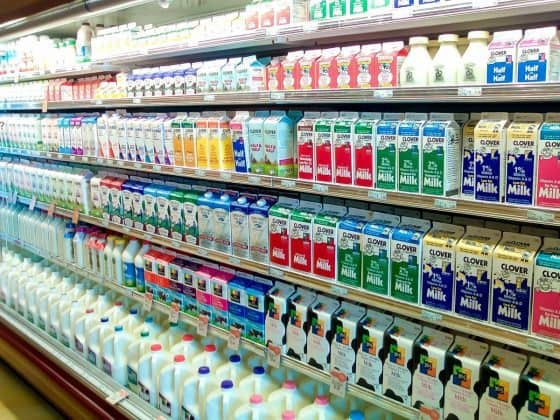
Cow’s Milk
Cow’s milk is rich in many vitamins required by your growing child, including calcium, saturated fat, vitamin B12, protein and vitamin D. Milk, however, is fortified with vitamin D — it is not found naturally. Though these can be obtained elsewhere in your diet, milk is the most common choice for parents when transitioning their child. The health benefits of milk are not exaggerated and if your child is a picky eater, this can be a quick and easy way to get these building blocks into them.
However, a large part of the population is lactose intolerant and milk can cause chronic stomach aches, diarrhea and acid reflux. As many as 50 million Americans are lactose intolerant, including 90% of all Asian-Americans, 75% of all African-Americans, Mexican-Americans and Jews. Lactose is the sugar that you find in milk and when your body cannot produce enough of the lactase enzyme, you become unable to digest lactose. This intolerance can be host to a wide range of health problems in children and adults alike. Drinking too much milk can also lead to anemia as well as obesity due to its high fat content. Milk can also be host to many added chemicals and hormones so if you are transitioning it may benefit your family to consider purchasing organic milk.
Cow’s milk is custom designed for a calf just as mom’s milk is custom designed for baby. This goes a long way to explain the high fat content in milk. However, if you do choose to transition your child to milk remember that unless recommended by your doctor you should always offer your toddler whole milk and never more than 3 cups a day. It can be very easy for them to fill up on milk instead of getting some of their nutrients elsewhere.

Raw Milk
Raw milk is unpasteurized milk, taken straight from the udder of a cow then bottled, cooled and ready to be consumed. This drink is always up for debate in the news. Unfortunately, whether or not it is a great health substance or a dangerous drink may not have a one-size-fits-all answer.
Virtually all of the milk you buy in grocery stores has been pasteurized. This means that it has been heat-treated to kill microorganisms that might make you sick. Many claim that raw, unpasteurized milk might actually be better for you and taste a lot better too. They believe that it has a superior flavor and texture to pasteurized milk. It also has been known to be easier to digest than pasteurized milk, thus if your child has a lactose intolerance but you still wish for them to consume dairy, it may be a good alternative for you.
Consumers believe that raw milk is higher in nutritional content than conventional milk and that the pasteurization process reduces these nutritional qualities. It comes from a cow that grazes on grass, rather than the grain they are fed in confined dairy farms. Some evidence does suggest that milk from these cows is likely to have higher levels of fat-soluble vitamins as well as other nutrients. Cows fed fresh green grass have been shown to have higher levels of conjugated linoleic acid (CLA) and essential fatty acids in their milk.
With that said, there is a slight risk of serious illness that comes with drinking unpasteurized milk. To put this risk in perspective statistically, the threat of developing a serious illness (requiring hospitalization) from drinking unpasteurized milk is very low: less than one in a million. When considering your options for transitioning your child it’s important to note that this risk category is higher for young children (under 3-4 years old).
Goat’s Milk
In many parts of the world goat’s milk is actually preferred to cow’s milk. It has a reputation for being less allergenic and easier to digest. Goat’s milk contains slightly lower levels of lactose (4.1 percent versus 4.7 percent in cow’s milk), which could be a small advantage for a child who is lactose intolerant.
Generally, the mineral content of goat’s milk is similar to that of cow’s milk. However goat’s milk contains 13 percent more calcium, 25 percent more vitamin B-6, 47 percent more vitamin A, three times more niacin and 134 percent more potassium. It is also four times higher in copper. Goat’s milk contains 27 percent more of the antioxidant selenium than cow’s milk. However, cow’s milk contains ten times as much folic acid and five times as much vitamin B-12 as goat’s milk.
Unlike cow’s milk, which is designed to take a 100 pound calf and help it grow into a 1200 pound cow, goat’s milk helps a 7-9 pound kid (baby goat) grow into a 100-200 pound adult goat. You can see why people say that goat’s milk may be better suited for child consumption. For this reason, it is favored by many professionals, including Dr. Sears, as the best milk option to transition your child.

Coconut Milk
Coconut milk is a creamy, dairy-free alternative derived from the flesh of fresh coconut. It is low in carbohydrates, cholesterol and sodium. It also contains “healthy fats” that are rich in lauric acid, is full of vitamin B12 and each 1-cup serving of coconut milk provides you with an impressive 3.9 milligrams of iron.
Coconut milk is high in calories and contains the highest amount of saturated fat of any alternative milk. It also is low in calcium and protein. If you are considering coconut milk when transitioning your child, be sure to regulate their intake and ensure their other vitamin and mineral needs are met through a healthy diet.
Soy Milk
Soy milk is arguably the most well known alternative to milk. In general, depending on the type you buy, it is also the least processed of all the alternative milks. Readily available both in organic and non-organic versions, soy milk is both high in protein and low in fat with no cholesterol. However, similar to cow’s milk, it is a common food allergy for many, especially children.
Soy milk has about the same amount of protein as cow’s milk and some iron, but little calcium unless fortified.
The presence of isoflavones (called phytoestrogens) in soy products is often a debate among researchers. Isoflavones are a group of natural plant chemicals that can be found in small amounts in some legumes, grains and vegetables. These chemicals can mimic estrogen and lower your testosterone levels. Additionally, many popular soy milk brands contain casein, which is a cow’s milk protein, making (some) soy milks an allergen risk for children who are also allergic to cow’s milk proteins.
Since the soy crops are also some of the most contaminated when it comes to pesticides and GMO, it is crucial to purchase organic. For these reasons, if you choose soy as your alternative milk be sure to use it in moderation and check the calcium content. Also, like many other milk alternatives, be aware that some brands contain additives and thickeners.
Almond Milk
Almond milk is probably the most nutritious nut milk based on the health benefits and contents found in almonds themselves. It is a thick and creamy beverage with a favorable taste that is a good source of magnesium as well as calcium and vitamin E. Most store bought brands are also fortified with vitamins A and D.
In comparison to cow’s milk, almond milk is low in protein. Also, it is considered one of the more expensive alternative milks, and in some areas is harder to find. Just like many of the other alternative milks, store bought almond milks often contain added preservatives and thickeners, such as carrageenans, so be sure to check the labels!
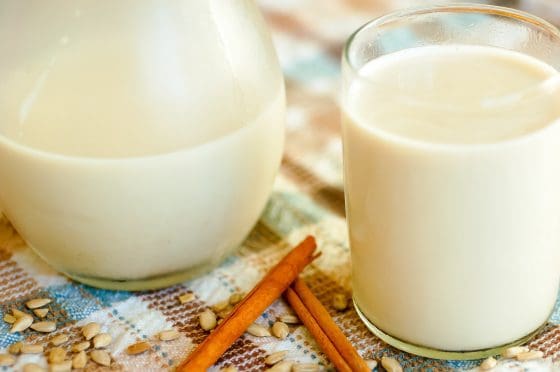
Rice Milk
Rice milk is the least allergenic of all the alternative milks. It is made up of processed, milled rice and blended with water. During this process the carbohydrates are transformed into a sugar, resulting in a natural sweet taste.
Unfortunately, this alternative is high in sugar and very low in nutritional value, unless fortified. It is also low in fat and calories making it a healthier drink for adults but certainly not good for your growing child. Rice milk is a great beverage to use as a milk substitute when cooking or baking for someone with lactose intolerance or nut allergies. If you choose to use it as an alternative drinking milk, be sure that it is fortified and that your child is obtaining proper nutrients through a healthy diet.
Hemp Milk
Hemp milk is the newest to the alternative milk family. It is a combination of hemp seeds and water which produces a creamy and somewhat nutty flavor.
This milk alternative is a good source of iron, magnesium, phosphorous, and vitamin E and even contains some protein. Hemp milk is high in omega fats, and is lactose & gluten-free. Therefore, similar to rice milk, it is also well tolerated for people with soy, dairy, or tree-nut allergies.
Unfortunately, as one of the newer alternative milks on the market, it is the least studied milk. If you choose to use it as an alternative to milk for your child be sure to plan accordingly. Since its fat content is higher than most others, do not depend on it as a major source of protein.
When choosing what milk to transition your child to, remember that for a healthy baby or toddler eating a well rounded diet, milk is just a drink. It is not an exclusive source of nutrition!
Photo Credits: Its a Logical Life, Sweet Beet and Green Bean, The Memoirs of Megan, Life Is Sweet



































